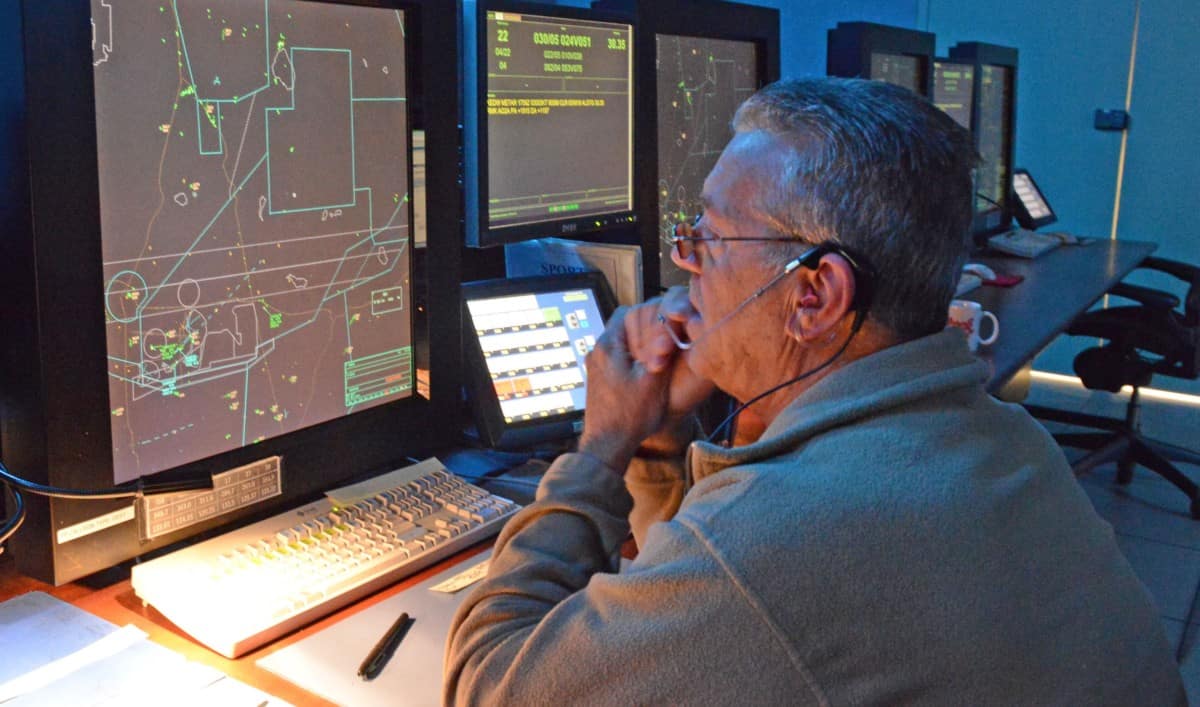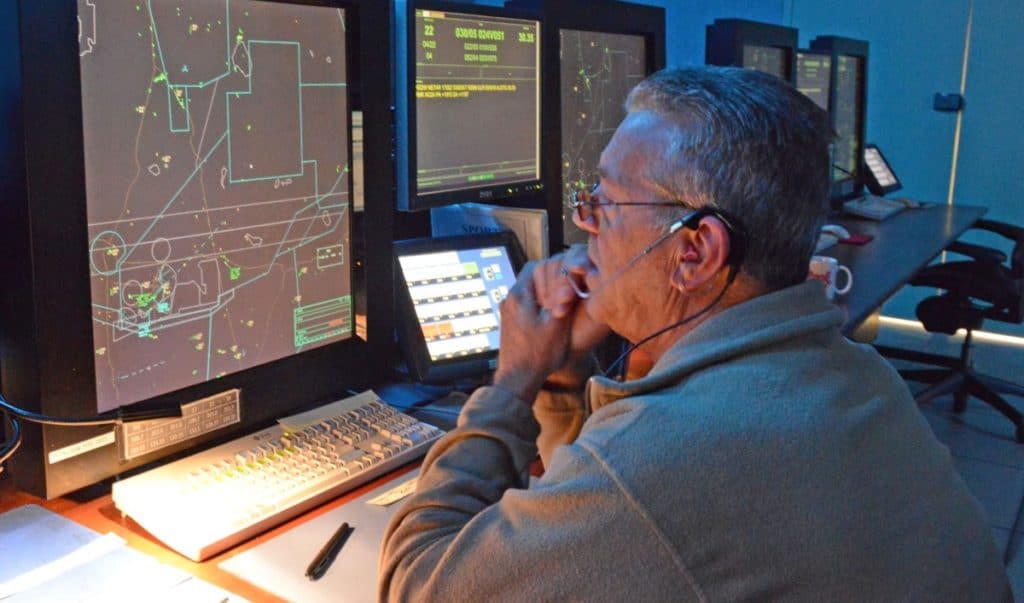
Have you ever watched a documentary and seen an Air Traffic Controller’s radar screen? It looks like complete chaos! Dots moving all over the place surrounded by numbers and arrows, how do they keep control of all that stuff?
Aircraft avoid each other by two means: First, by visual separation from the pilots, but when in cloud, at night, or up high, air traffic control give the pilots headings, altitudes, speeds & direction to maintain separation clearances from other aircraft using their radar & radio communications.
When I was first learning to fly I was intimidated talking to air traffic control so I spent a Sunday afternoon sitting next to both a tower controller and an approach controller and learned all about how aircraft avoid each other as well as overcoming my fear of talking to them!
The way pilots fly is split up into two ruling sections:
- VFR – Visual Flight Rules
- IFR – Instrument Flight Rules
Each of these types of flying has rules governing how aircraft avoid each other
Aircraft Avoidance Under VFR Flight
VFR Flight is by far the most common type of flying done outside of the airlines. When private owners, recreational fliers, and most helicopter operators go out flying they are having to maintain visual reference to the earth’s surface, hence Visual Flight Rules.
Basically, the pilots are out there doing as they wish once outside of or under the controlled airspace surrounding the larger airports and the airway system. It is up to the pilot to keep a watch for other aircraft using their own eyes and any technology like TCAS (Traffic Collision & Avoidance System) if they have it installed in their aircraft.
Referred to as the Mark 1 Eyeball, a pilot’s sight is the main avoidance device when flying VFR. When a pilot does encounter another aircraft there are several rules that help provide a safety margin:
- The lesser maneuverable aircraft has right of way (Balloon vs Plane, Glider vs Helicopter etc)
- The aircraft on the right has the right of way
- When approaching head-on, both aircraft turn to the right
- When overtaking a slower aircraft, overtake to the right side of the slower aircraft
- When flying over 3000 feet above the ground:
- Aircraft being flown between headings of 0°-179° will fly at ODD thousands of feet + 500 = (3,500ft|5,500ft|7,500ft etc)
- Aircraft being flown between headings 180°-359° will be fly at EVEN thousands of feet + 500 = (4,500ft|6,500ft|8,500ft etc)
When flying at night these rules also apply and even though it is dark all aircraft flown at night must have a mandatory lighting system installed and turned on. Aircraft lighting is arranged so pilots can determine the direction of flight of the other aircraft depending on the light colors they can see:
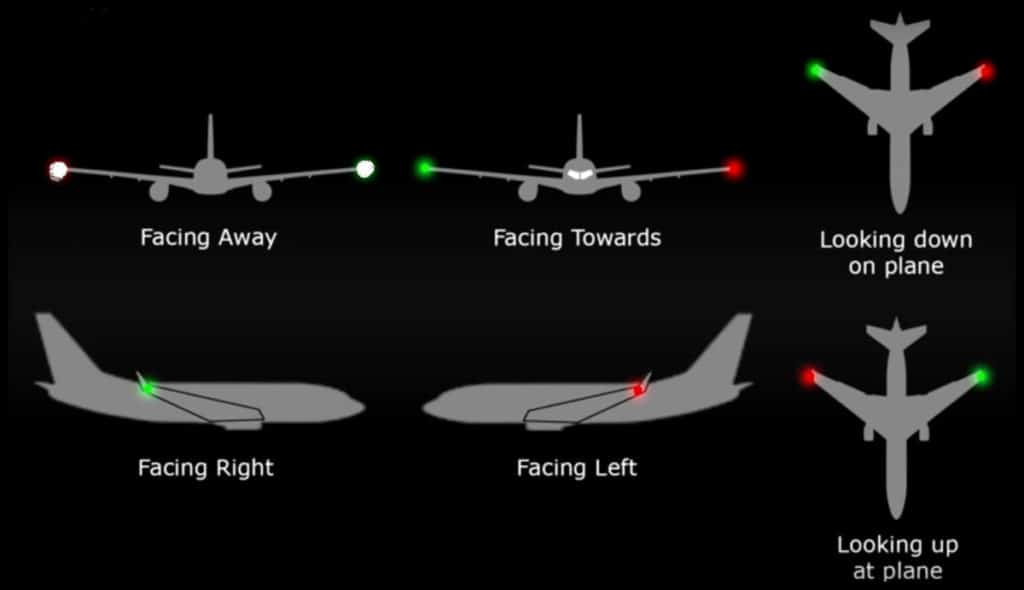
The last line of defense a pilot has when flying VFR is good radio calls, even if they think no one is there. Giving clear position reports at unmanned airports or common air-to-air frequencies will let other pilots know if they are in the same area together.
A good position report broadcast over the radio should contain the following:
- Who you are
- What frequency or frequencies you are monitoring
- Where you are
- What altitude you are at
- Where you are heading
- Any other pertinent information
For example, this was a VFR radio call I used just the other day:
“Red Lake Area Traffic on 122.8
Astar Foxtrot Oscar Romeo Sierra
Just off of Springpole Camp
2000 feet
Eastbound towards Red Lake
With an External Load“
It is surprising how many times I get up flying, give a position report of where I’ve just lifted from, and then 3-4 other pilots chirp up and inform everyone else of their position.
By doing this it helps a pilot build a mental picture of where everyone else is in relation to them – This is known as Situational Awareness.

Join My Newsletter & Get Great Tips, Information and Experiences To Help You Become a Superb Pilot!
Aircraft Avoidance Under IFR Flight
IFR Flight is by far the most common type of flying done by the airline and corporate jet industry. It allows aircraft to fly in all weather and at night because the pilots fly the aircraft by sole reference to the instrumentation with guidance from air traffic control, hence InstrumentFlight Rules.
Because there is nothing to see out of the window when the aircraft is in the clouds, above the clouds, at night, or in poor visibility, the pilots have to look at the instruments (mainly on glass screens now) in front of them to see what the aircraft is doing. Think of this as driving your car from home to work just by looking at the GPS and the instrument dials.
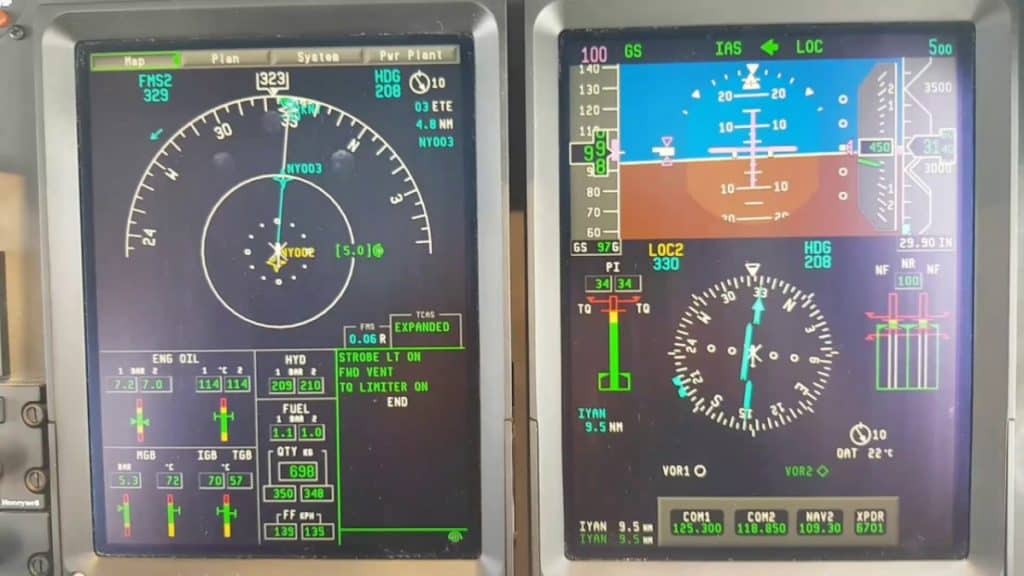
When flying under IFR rules, air traffic controllers are responsible for keeping all aircraft separated from one another because the pilots cannot see anything out of the windows. They do this by assigning your aircraft a timeslot in that part of the sky and no other aircraft can be in it at the same time as you.
To maintain separation control they will issue commands to the pilots over the radio. These commands could include:
- Headings to fly
- Altitudes to climb or descend to
- Speeds to fly at
- Other radio frequencies to change over to
- What number an aircraft is in sequence for landing
- Helping the pilots deal with an emergency
This is like one of the trains you may see in a sushi restaurant that keeps driving past you with plates of food on each carriage. Two plates cannot be carried at the same time, but when the chef sees an empty slot, he drops a plate of food into there and that spot is now filled.
When an aircraft takes off under IFR flight rules it will be passed from one air traffic controller to another as it passes through the country/globe. An air traffic controller has a set area of the sky they look after and it is their job to get every aircraft through it safely without breaking any of the minimum aircraft separation laws that govern them.
The controller’s area of the sky might be small but busy, like the approach to a busy airport like Atlanta, or it could cover several US states because aircraft are en route and up high just transiting through. Each area is designed to keep the workload of all the aircraft within it at a manageable level for the air traffic controllers.
TCAS
As air traffic controllers are human, it is inevitable that mistakes have and do happen which has ultimately led to mid-air collisions, all of which are fatal. After multiple mid-air collisions in the US, the FAA pushed for a system to be designed that can be fitted to aircraft to warn pilots if it detects an aircraft within their vicinity.
The system that was developed is called TCAS – Traffic Collision & Avoidance System. It is now mandated that any US-registered aircraft with over 30 seats must have a TCAS system installed and most IFR-capable aircraft also have this fitted as it really is a great tool, even in VFR use too!
All IFR Aircraft are fitted with a device called a Transponder and this device sends out information about the aircraft when it is interrogated by an outside radio signal, like that of an air traffic control radar or a TCAS of another aircraft.
The TCAS in every aircraft is constantly sending out interrogation requests and when the transponder of another aircraft gets that request, it sends it the information.
This is like a lecturer calling out into a dark classroom “Is anyone in here?“. If there is a student, they say “Yes, I am here! I am standing at your 2 O’clock and I’m sitting on the ground below you” – This is just how TCAS works
When the TCAS on an aircraft receives information about the other aircraft it can display the position of the other aircraft on the glass screen in front of the pilot. When it detects that the other aircraft is within 1,200 feet of your altitude and within 6 nautical miles, it will display that aircraft as a diamond on the screen in the geographic area in relation to you.
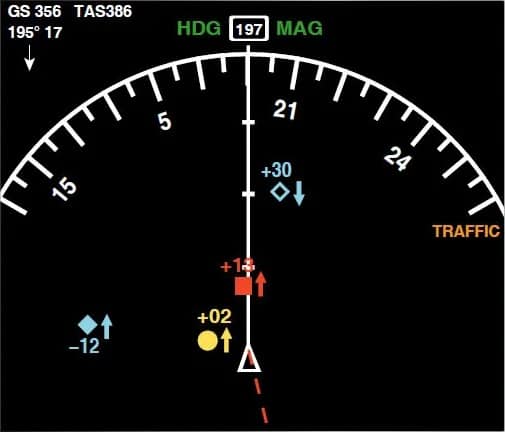
Arrows Indicate Climb/Descent Direction, Numbers are 100’s of Feet From Your Current Altitude
The cool feature about TCAS is that it can also tell if the other aircraft poses a danger and shout out instructions to the pilots on what to do. If another aircraft gets much closer than those parameters, it will change to an amber circle and set off an audible alert to the pilots: “Traffic, traffic”.
Depending on the sophistication of the TCAS systems installed, it can communicate with the TCAS system in the other aircraft and coordinate collision prevention directions. In one aircraft it would tell the pilots to climb while simultaneously telling the pilots of the other aircraft to descend!
I have used this system and it works great, the only downfall is when you are flying IFR and someone in a private plane is flying up high and has no transponder turned on. Even though they are unaware they are in controlled airspace it can cause some tense moments when they just suddenly appear!
To Finish
Following set rules and procedures, instructions given by air traffic controllers, and avoidance systems like TCAS are all the primary ways many aircraft remain clear of one another.
But, no matter what a system or someone on the radio is telling a pilot, the view from the pilot’s eyes is always the last line of defense in preventing near misses or worse.
Keeping a vigil eye open for aircraft at all times, even when it is pitch black will help increase the safety margin on any flight. When pilots are out flying by themselves it is always good airmanship to give out position reports over the radio because there just might be another aircraft close by they have not seen!
Further Reading
If you found this article interesting and would like to keep reading, I highly recommend the following articles from my blog:

